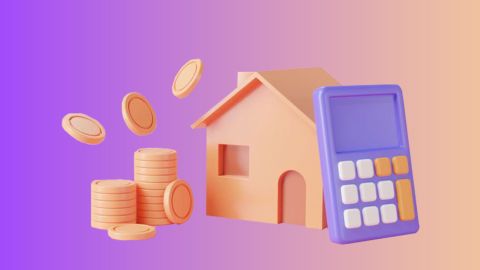Effectively managing finances involves exploring tax-saving avenues, and one such important aspect is understanding House Rent Allowance (HRA). In India, individuals have a plethora of tax-saving options to streamline financial planning and reduce tax liabilities. These include investments in Public Provident Fund (PPF), insurance plans, tax-saving fixed deposits, Equity Linked Savings Schemes (ELSS), National Savings Certificate (NSC), and contributions to the Employee Provident Fund (EPF). Additionally, deductions under Section 80C of the Income Tax Act cover expenses like life insurance premiums and tuition fees.
Furthermore, homeowners can capitalise on their property by leveraging home loans for tax benefits, with principal repayments and interest payments qualifying for deductions under Section 80C and Section 24(b) respectively. This strategic utilisation not only meets housing needs but also results in significant tax savings.
Understanding House Rent Allowance (HRA)
House Rent Allowance (HRA) is an essential component of many salary structures, especially for individuals residing in rented accommodations. HRA serves as a financial benefit provided by employers to employees to cover their rental expenses. It is specifically designed to alleviate the financial burden associated with renting a house and forms a crucial part of tax planning strategies for individuals.
HRA calculation methods
Calculating HRA involves several methods, each with its own set of conditions and considerations. The commonly used methods include:
- Actual HRA received: This method involves calculating the actual amount of HRA received from the employer. The least of the following amounts are considered for deduction: actual HRA received 50% of salary for those residing in metro cities or 40% for non-metro cities, and the excess of rent paid over 10% of salary.
- Rent paid minus 10% of salary: Under this method, the difference between the rent paid and 10% of the salary is considered for HRA deduction. The least of the following amounts are deductible: rent paid minus 10% of salary, actual HRA received, or 50% of salary for metro cities and 40% for non-metro cities.
- 50% of salary: In this method, 50% of the individual's salary is considered for HRA deduction, provided they reside in metro cities. For non-metro cities, the percentage is reduced to 40%.
Eligibility criteria for HRA
To claim HRA benefits, certain eligibility criteria must be met:
- The individual must be a salaried employee receiving HRA as part of their salary package.
- They must pay rent for accommodation where they reside.
- If the rent paid exceeds a certain threshold, the landlord's PAN details must be provided.
- HRA cannot be claimed if the individual resides in a self-owned property.
- Rent receipts and other relevant documents must be maintained as proof of rent paid.
Documents required for claiming HRA
To avail of HRA benefits, individuals need to provide certain documents, including:
- Rent receipts as proof of rent paid.
- Lease agreement or rent agreement with the landlord.
- PAN card details of the landlord if the annual rent exceeds a specified limit.
- Salary slips reflecting the HRA component.
HRA exemption rules and limits
Under Section 10(13A) of the Income Tax Act, HRA benefits are exempt from tax up to a certain limit. The exemption is calculated as the minimum of the following amounts:
- Actual HRA received.
- 50% of salary for those residing in metro cities or 40% for non-metro cities.
- The excess of rent paid over 10% of salary.
Impact of HRA on taxation
The presence of HRA in salary structures can significantly impact an individual's tax liability. By claiming HRA benefits, individuals can reduce their taxable income, thereby lowering their overall tax burden. However, it is essential to understand the intricacies of HRA calculation and the eligibility criteria to maximise tax savings effectively.
Leveraging home loans for tax savings
In addition to HRA, home loans also offer significant tax benefits. Principal repayments qualify for deductions under Section 80C, while interest payments are eligible for deductions under Section 24(b) of the Income Tax Act. By strategically utilising home loans, individuals can not only fulfil their housing aspirations but also enjoy substantial tax savings, ensuring a financially sound future.
Avail of a home loan from Bajaj Housing Finance
If you are in pursuit of your dream home and require financial assistance, consider availing of a home loan from Bajaj Housing Finance. With Bajaj Housing Finance, you can access funds tailored to suit your specific housing needs, making your homeownership journey seamless and hassle-free. Furthermore, if you already have an existing home loan and are seeking better terms and benefits, transferring it to Bajaj Finance could be a prudent move. Bajaj Housing Finance provides seamless loan transfers, allowing you to enjoy enhanced benefits such as quick disbursal, lower interest rates, and extended repayment tenure.
Apply for a home loan today and take the first step towards owning your dream home.




